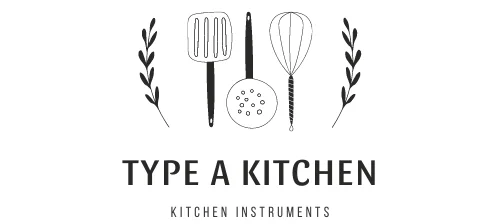Introduction
Non-stick pans have revolutionized the way we cook. With their smooth surface and easy-to-clean exterior, they make cooking a breeze. However, as with most things in life, there is a downside. While non-stick pans are great for cooking, they can be incredibly difficult to clean if you leave stubborn stains on them.
Another issue with non-stick pans is that sometimes food residues get left behind after cooking. If this happens, don’t worry; there are several ways to remove these stubborn stains from your pan without damaging its surface or using harsh chemicals that could harm your health or your environment – keep reading!
Overview of How to get rid of stains on non-stick pans
Non-stick pans are great to have in the kitchen because they make cooking and cleaning up a breeze. Fortunately, there are several ways to remove stains from non-stick pans without damaging the coating.
One method is to mix baking soda and water into a paste and apply it to the stained areas with a soft sponge or cloth. Another option is to fill the pan with equal parts water and white vinegar and bring it to a boil. Once boiling, turn off the heat and let the solution cool before washing as usual.
For tougher stains, you can try using a non-abrasive cleaner specifically designed for non-stick surfaces or soaking your pan overnight in hot soapy water mixed with dish soap and baking soda.
10 ways How to get rid of stains on non-stick pans
Baking Soda and Water Paste
To make the paste, simply mix equal parts of baking soda and water until it forms a thick consistency. Then apply the paste to the stained area of your pan and let it sit for about 30 minutes. After that, use a scrub brush or sponge to gently scrub away the stain. Rinse thoroughly with hot water and dry with a soft cloth.
White Vinegar and Baking Soda Paste
To make this paste, mix equal parts of white vinegar and baking soda in a bowl until it forms a thick consistency. Then apply the paste directly onto the stained areas of your non-stick pan. Allow the mixture to sit for at least 15 minutes before scrubbing with a soft-bristled brush or sponge.
After scrubbing away all the stains, rinse your pan with warm water and dry it completely before using it again.
Cream of Tartar and Hydrogen Peroxide Paste
This paste is made by mixing equal parts of cream of tartar and hydrogen peroxide in a bowl until it forms a thick paste. The paste should then be applied to the stained area on the pan, left to sit for about 30 minutes, and then scrubbed off with a soft sponge or cloth.
Boiling Water and Dish Soap Soak
To use this method, fill your pan with enough water to cover the stains and add a few drops of dish soap. Bring the mixture to a boil, then reduce the heat and let it simmer for about 15 minutes. After simmering, turn off the heat and carefully pour out the hot water. Use a soft sponge or cloth to wipe away any remaining residue on the surface of your pan. Rinse thoroughly with warm water before drying with a towel.
Lemon Juice and Salt Scrub
To make the lemon juice and salt scrub, mix equal parts of lemon juice and salt in a bowl until you have a thick paste. Then, apply the mixture to the stained areas of your non-stick pan and use a soft-bristled brush to gently scrub the surface. Be careful not to use anything too abrasive that could scratch the non-stick coating. After thoroughly scrubbing, rinse the pan with warm water and dry it with a clean towel.
Bar Keepers Friend Powder
Bar Keepers Friend Powder is a versatile cleaning product that can help you remove stubborn stains on your non-stick pans. This powder contains a blend of ingredients that work together to break down tough stains and grime without damaging the surface of your cookware. It’s easy to use, simply sprinkle the powder onto a damp sponge or cloth, rub it onto the stained area, and rinse with water.
Hydrogen Peroxide and Baking Soda Scrub
To make this scrub, simply mix together equal parts hydrogen peroxide and baking soda until you have a thick paste. Then, use a soft-bristled brush or sponge to apply the paste to your stained non-stick pan. Gently scrub in circular motions, focusing on any particularly stubborn spots. After a few minutes of scrubbing, rinse the pan thoroughly with warm water.
Commercial Non-Stick Pan Cleaner
To use, simply apply a small amount of the cleaner on the pan’s surface and let it sit for some time before wiping it away with a soft sponge or cloth. The formula is designed to penetrate deep into the pores of the non-stick coating and dissolve any stubborn stains that might be present. With regular use of a Commercial Non-Stick Pan Cleaner, your non-stick pans will remain in excellent condition, free from scratches or damages caused by harsh cleaning agents.
Boiling Water and Vinegar Soak
To use this method, you need to fill your non-stick pan with equal parts of water and vinegar. Then place it on the stove and bring it to a boil. Let the mixture simmer for about 10 minutes or until you see the stains starting to loosen up. Once done, let it cool down before draining the liquid and wiping it away with a soft sponge.
Steel Wool and Dish Soap Scrub (for tough stains)
To use this method, wet your non-stick pan with warm water and add a few drops of dish soap. Scrub the pan gently with steel wool until the stain disappears. Rinse thoroughly with warm water and dry.
Conclusion:
Getting rid of stubborn stains on your non-stick pans is now easier than ever. With the tips and tricks discussed in this article, you can keep your pans looking as good as new without putting in too much effort. Remember to avoid using abrasive scrubbers or harsh chemicals that can damage the non-stick coating. Instead, try using simple household items such as baking soda and vinegar to get rid of tough stains. By adopting these practices, you can prolong the lifespan of your non-stick pans and enjoy cooking without worrying about unsightly stains. So go ahead and put these tips into practice today!


